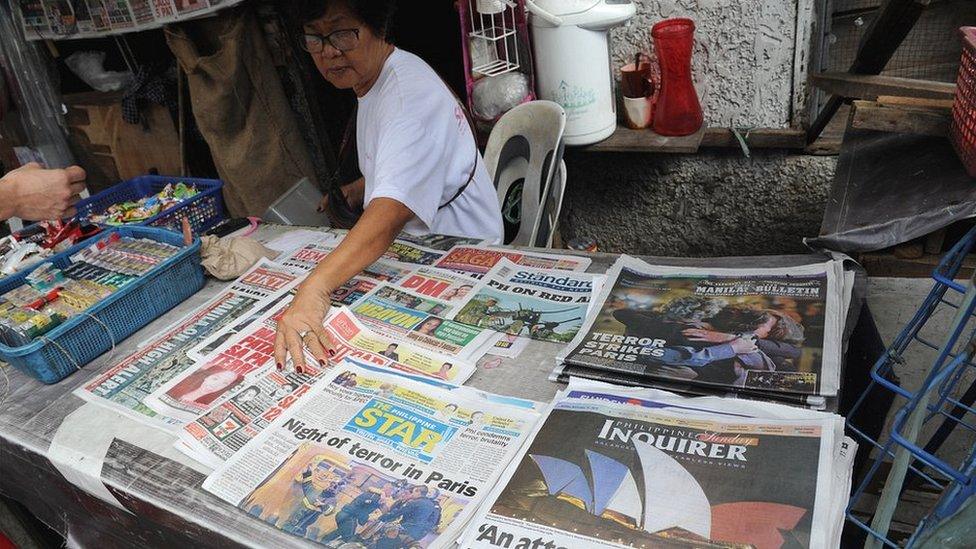Philippines media guide
- Published

Freedom House says the Philippines is one of the most dangerous places in the world for journalists
Powerful commercial interests control or influence much of the media.
The lively TV scene is dominated by free-to-air networks ABS-CBN and GMA. Some Manila-based networks broadcast in local languages. Cable TV has extensive reach.
Films, comedies and entertainment shows attract the largest audiences.
There are hundreds of radio stations. Manila Broadcasting Company is a leading network.
The private press is vigorous, comprising hundreds of newspaper titles. The most popular are Filipino-language tabloids, which can be prone to sensationalism.
Press freedom is guaranteed under the constitution. Government censorship is not a serious problem, but the Philippines is one of the most dangerous places in the world for journalists, says US-based Freedom House.
"Private militias, often hired by local politicians, silence journalists with complete impunity," says Reporters Without Borders.
There were 101 million internet users by July 2022, 91% of the population (Internetworldstats.com). Facebook and Twitter are the most popular platforms.
There is no systematic censorship of online content, says Freedom House.
Press
Philippine Star, external - daily
The Daily Tribune, external - daily
Manila Bulletin, external - daily
Manila Times, external - daily
Business World, external - daily
Television
ABS-CBN, external - commercial
GMA Network, external - commercial
ETC, external - commercial
People's Television, external - government-owned
Radio
ABS-CBN, external - operates stations nationally
GMA Network, external - operates stations nationally
Manila Broadcasting Company (MBC), external - operates stations nationally
Radio Mindanao Network, external - operates more than 50 stations nationwide
Philippine Broadcasting Service (PBS), external - government-run, operates 31 stations nationwide with emphasis on news, public affairs
News agency
Philippines News Agency, external - government-run